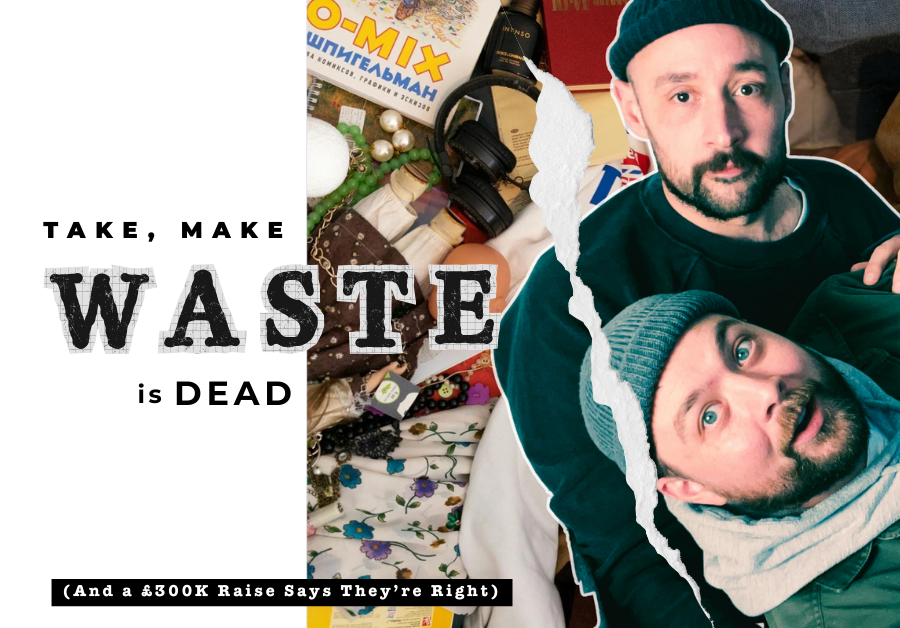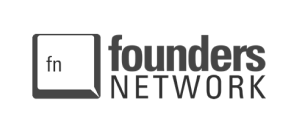One of the most important ideas to understand within the tech startup space is the concept of an MVP or minimum viable product.
A minimum viable product is the version of your product that allows you to test and validate your ideas for the least amount of effort.
Many startups fail because they build a product without testing their assumptions.
Entrepreneurs often come up with an idea they think will solve a problem better than existing solutions in the market. They assume that their product will solve a problem and that people will be willing to pay.
If these assumptions turn out wrong it can be very costly for the startup, as they will have invested time and money into building something that has limited commercial viability.
An example of a startup failure like this is Juicero, a company that raised $120m to build a $400 juicer that squeezed the juice out of pre-packaged juice boxes. Unsurprisingly, it turned out to be a flop.
If you are a startup entrepreneur with an idea you think solves a problem, you should create an MVP to test your hypothesis.
To do that, you will need to understand what a minimum viable product is and how to create one.
Luckily, you are in the right place!
In this guide, we will be covering the following:
📱 What is a minimum viable product?
📱 Types of minimum viable products.
📱 Eight successful minimum viable product examples.
📱 Tips for creating your minimum viable product.
Read on to find out everything you need to know about minimum viable products.
What Is a Minimum Viable Product?
The minimum viable product concept was formalised in the lean startup methodology introduced by Eric Riess in his book The Lean Startup in 2011.
According to his lean startup philosophy, when creating a new business or product, ‘the first step is figuring out the problem that needs to be solved and then developing a minimum viable product (MVP) to begin the learning process as quickly as possible.’
His minimum viable product definition is ‘a version of a new product which allows a team to collect the maximum amount of validated learning about customers with the least effort.’
You are not trying to answer the question of whether a product can be built, but rather whether a product should be built and whether there is a commercial opportunity for the product.
To answer these questions, you need to create what he calls a ‘build-measure-learn’ feedback loop.
Creating this loop consists of the following three steps:
🔹 Start with a problem you think needs to be solved.
🔹 Build a minimum viable product to solve it.
🔹 Release the minimum viable product to potential users to measure if it works and whether they will pay for it.
Types of Minimum Viable Products
There are a lot of different minimum viable product templates that you can use when creating your MVP.
Here is a breakdown of five of the most popular ones, including some of their benefits.
💡 Landing Page MVP
With a landing page minimum viable product, you create a web page where you introduce your product concept to site visitors.
The page needs to describe your product or service and illustrate the value proposition.
By creating a call to action you can determine demand for your product. The CTA may require payment or even just signing up to a list; you’re looking for signals that interest will equal paying customers. The bigger the ask from the user, the better the insight on their intent.
The landing page can also build up FOMO (fear of missing out) by creating a degree of exclusivity – the first 100 sign ups get 40% off, etc.
Benefits:
- Cheap and easy to deploy.
- Allows you to collect email addresses and user information from potential users.
- You can create multiple landing pages to test different marketing strategies.
💡 Single-Feature MVP
A single-feature minimum viable product involves building a working application with only one feature.
The idea is to identify one feature that will solve a problem for your potential users, build a working application and release it to test whether it solves the problem.
Benefits:
- Faster and cheaper to develop than a full-featured solution.
- Easier to explain to your target audience.
- By focusing on solving one specific problem, you can ensure that you solve it exceptionally well.
💡 Concierge MVP
A concierge minimum viable product approach involves using people to act as ‘concierges’ to manually offer a service to test whether a product would work.
For example, let’s say you want to create an application that gives people book recommendations.
You could get together a group of potential customers, have them fill out a survey and then manually provide them with book recommendations.
Benefits:
- You can get immediate feedback directly from your clients to learn about their expectations.
- You can understand which features work well before developing your product.
💡 Wizard of Oz MVP
The Wizard of Oz minimum viable product gets its name from the famous movie, where the wizard turns out to be an old man behind a curtain pulling levers.
The idea behind a Wizard of OZ MVP is to create something that looks like a fully featured and functioning product from the outside, but all (or most of) the processes are executed manually in the background by humans.
However, unlike the concierge minimum viable product example, users don’t know that the processes are being done manually.
Benefits:
- At the start, it can be much cheaper to mimic a functioning system by having people do the work behind the scenes.
- You can quickly test how a mature system would behave.
💡 Piecemeal MVP
A piecemeal minimum viable product is where you create an MVP by using existing third-party tools and services.
The idea behind this is that your MVP will be more than the sum of its parts so that you can bring together various features from different providers and offer them as a consolidated product.
Then, once you have validated your assumptions, you can build out the product and gradually phase out the third-party services.
Benefits:
- Using other tech tools and services allows you to keep development costs down when creating your MVP.
- It gives insight into where to improve the existing services when developing your version.
Minimum Viable Product Examples
The best way to learn about MVPs is to look at real-world minimum viable product examples.
Let’s have a look at eight of the best examples of startup businesses successfully launching a product starting with a minimum viable product.
Uber
Uber Technologies needs very little introduction, as it is valued at $54 billion and operates all across the world.
Today it offers several different services, including its original ride-hailing service, food delivery, and package delivery.
However, it started in 2010 with a minimum viable product called UberCab.
The two co-founders, Garett Camp and Travis Kalanick, had the idea for Uber the previous year when they were attending a tech conference in Paris and couldn’t find a cab. This led to the idea ‘What if you could request a taxi ride from your phone?’
This is the idea that they set out to validate with UberCab.
They started with a simplified mobile interface offering just one feature, ordering a ride via the application.
This is a great single-feature minimum viable product example.
When initially launching their minimum viable product, this is what their website looked like.

They started small with only a few cars, and only offered the service in San Francisco, a market of users who were likely to be early adopters of new technology.
This allowed them to keep their costs down and validate their idea in a small market where it was easier to get traction.
Testing the idea by launching a single-feature MVP enabled them to get valuable user feedback to keep improving the product, leading to them building out more features like fare estimates and live tracking of driver locations.
Once they had validated that ride-hailing was a service people wanted and were willing to pay for, they could raise the capital to quickly start expanding their service to multiple markets and growing their business.
Within a year of launching its minimum viable product, the company raised $11m in Series A funding.
What Can We Learn from Uber’s Minimum Viable Product Example?
- Starting small is incredibly important, as it allows you to keep costs down.
- Focusing on one idea at a time, testing it, and validating it before building out more features is especially important when launching a new technology.
- Small markets mean it’s easier to create liquidity in the market
- Once you have validated your idea, it is a lot easier to raise the capital you need to expand your business.
Dropbox
Dropbox is a file hosting service that allows users to create a unique Dropbox folder on their computer. The contents of that folder are then synced via a desktop app to Dropbox’s servers to store the files in the cloud rather than just on the user’s machine.
This allows users to access those files from any machine and easily share files with other people.
Although cloud storage services are now quite common, they didn’t exist when Drew Houston, the founder of Dropbox, had the idea for it in 2007.
Drew had the problem of constantly forgetting his USB drive whilst a student at MIT, which gave him the idea of creating an online file storage and sharing solution.
However, he needed to know whether other people were experiencing the same problem, so he needed to create a minimum viable product to test his idea.
But he had the problem that creating a file hosting service is quite challenging, and even developing a bare-bones version of it would take a significant amount of investment.
The solution he came up with was to create a simple video to explain his product idea.
The video pointed potential users to a landing page where they could sign up to get access to the beta version once it was released.
This is a very good landing page minimum viable product example.
You can have a look at Drew’s product explainer video here:
The demo video and landing page MVP worked so well for Dropbox that after releasing the product video, signups to their waiting list immediately jumped from 5,000 users to 75,000 users.
This validated the idea and meant that Drew could acquire the initial funding he needed to build out his product from Y Combinator.
Today Dropbox is valued at $8.6 billion.
What Can We Learn from Dropbox’s Minimum Viable Product Example?
- Your MVP doesn’t need to be a working version of your product.
- You just need to be able to explain your unique value proposition and validate customer interest in the idea.
- A landing page MVP works very well for this.
Airbnb
Airbnb is an online marketplace that connects people who want to rent out a room in their home, or their entire property, to people looking for accommodation in their area.
The company is currently valued at $59.47 billion and operates in 191 countries.
However, when the company started in 2007 it was a completely new idea.
The idea came about when the founders, Joe Gebbia and Brian Chesky, noticed that there was no accommodation available in the Bay Area in San Francisco during the Industrial Design Society of America Conference (IDSA) conference in 2007.
They spotted a business opportunity with the idea that people looking for accommodation would be willing to pay for a place to stay in a private home.
They decided to test this idea by renting out some air mattresses in their own homes, which is where the name Airbnb came from (it was originally called Airbedandbreakfast).
To do this they put together a very basic website offering accommodation and offered the service in person to people needing a place to stay during the conference.
The fact that the founders provided the service themselves in person makes this a good minimum viable product example of the concierge MVP type.
This is what their original website looked like.

Even with a very basic website and only offering accommodation on air mattresses in their living rooms, the idea worked and they got three people to rent from them.
However, to turn this into a viable business, the founders had to test a second assumption: whether other people would be willing to rent out accommodation in their homes.
To do this they added a second feature allowing hosts to list on the platform.
They kept it simple and focused on targeting potential hosts near high-demand events in San Francisco.

Again, their idea was validated and they managed to get several hosts to list accommodation for rent on their platform.
Once they had validated both sides of their idea, they could start raising capital and growing their business in more cities.
However, even with this Airbnb took a novel do-it-yourself approach, and to get the initial funding to keep their business afloat they decided to sell Obama-themed cereal boxes during the 2008 US presidential campaign.
They managed to raise $30,000 in funding for the company, which kept them going until Y Combinator invested in them in 2009.
What Can We Learn from Airbnb’s Minimum Viable Product Example?
- When your product involves people offering a service, testing it by doing it yourself first is a good approach.
- It helps to focus on one idea at a time and validate it in a small market. Once you have proven that your core functionality works you can start improving it.
Amazon
Amazon is the largest online retailer in the world, but it was famously started by Jeff Bezos in his garage.

Amazon is one of the original Wizard of Oz minimum viable product examples.
Bezos had the idea that he could create an online marketplace where people could order almost any kind of product.
However, to test this idea he decided to first offer a single product: books. His first step was to create a website listing books for sale.

The website listed 1 million book titles as being for sale by Amazon, giving the impression that Amazon was a large online bookstore with its own stock.
In reality, whenever a customer ordered a book, Jeff Bezos would drive to a bookstore, buy the book and then post it to the customer.
Giving the impression of having a complete working product whilst executing the background processes manually is what makes this a Wizard of Oz minimum viable product example.
Doing things this way enabled Bezos to keep his overhead costs down whilst simultaneously growing the business.
It worked, and within the first two months of doing business Amazon had sold books to customers in 45 different countries and was doing more than $20,000 a week in sales.
Today the company is valued at $934.27 billion and went from only selling books online to selling almost any product you can think of.
What Can We Learn from Amazon’s Minimum Viable Product Example?
- By using manual processes you can keep your initial capital investment low.
- It also enables you to grow your business whilst validating your idea.
Given the cultural impact that Twitter has had, it is hard to imagine that it initially started as an SMS service.
In 2006, Twitter’s founders, Jack Dorsey, Evan Williams, Biz Stone, and Noah Glass, were all working at a podcasting company called Odeo.
They had a brainstorming session to come up with new ideas, and Jack Dorsey pitched the idea of creating an SMS service that would allow an individual to use SMS to communicate with a group of people (instead of just one recipient). The fact that it was originally an SMSservice is where the character limit of a tweet came from.
They built a prototype of the service with only one feature, allowing a user to send an SMS status to multiple people at once, and released it internally at Odeo.
The service was immediately popular with employees at Odeo, which validated to the founders that it could be a commercially viable product.
They further developed the platform and released it to the public in July of 2006, but still with only one feature.

This allowed them to validate that it was commercially viable, before building out the product further.
Twitter is also a good single-feature minimum viable product example.
What Can We Learn from Twitter’s Minimum Viable Product Example?
- Testing the product with a small internal audience allows you to validate your idea and get valuable feedback from users.
- This enables you to confidently invest the necessary time and resources to build your prototype out as a commercial product.
Buffer
Buffer provides a social media toolkit that enables its customers to manage multiple social media accounts from one application.
However, the idea for Buffer and scheduling social media posts initially came about due to Twitter.
Its founder, Joel Gascoigne, was an avid Twitter user who had a problem that he wanted to be able to queue scheduled tweets.
According to his blog, he had been using the scheduling feature of other Twitter applications, but none of them worked very well.
This gave him the idea of building an application that focused solely on scheduling tweets.
However, he is a proponent of the lean startup principles of Eric Riess, so he knew he had to build a minimal viable product first to test whether an application like this could be turned into a viable business.
He wanted his MVP to be as minimal as possible, so he went with a landing page minimum viable product, and built the following two-page landing page:

Once Joel confirmed that people wanted a service like Buffer he needed to check if they would pay for it.
He added one extra page to the landing page, listing different payment options.

Once people clicked on a payment option, they were taken to the same page where they could fill in their email.
This gave Joel valuable customer feedback and enabled him to test different pricing options. Only once he had proven that there was a demand for his product did Joel start building Buffer.
What Can We Learn from Buffer’s Minimum Viable Product Example?
- A landing page minimum viable product is an excellent way of gauging the commercial demand for a product idea.
Groupon
Groupon is a company that offers its subscribers various coupon deals with local businesses.
It started in 2008 in Boston, USA, but soon the company grew internationally and by 2015 it had 48 million subscribers in more than 500 cities worldwide.
However, its founders started small and their original website is a classic piecemeal MVP example.
The idea for their business model was that people would be willing to buy coupons from their online store if it meant they could get a discount on the goods or services provided by the local businesses.
To test this idea, they used existing tools to build their minimum viable product.
They created a simple WordPress website and called it Groupon. They then negotiated a two-for-one deal with Motel Bar, a pizza restaurant in their office building, for which they sold coupons on the Groupon site.
To generate the actual coupons they used a program called FileMaker, which generated a PDF coupon.
They then automated their emailing system with Apple Mail to send the PDFs to customers.
As you can see below, it wasn’t a sophisticated website, but the idea worked. On their first day of launching the two-for-one pizza deal, over 25 people bought a coupon.

What Can We Learn from Groupon’s Minimum Viable Product Example?
- Your minimum viable product doesn’t have to be perfect. It just needs to be good enough to validate your business idea.
- It is possible to create a piecemeal minimum viable product with the core features you need using existing tools, so you don’t have to reinvent the wheel.
Zappos
Zappos is an online retailer of shoes and clothing based in Las Vegas.
It was founded in 1999 by Nick Swinmurn and was originally called Shoesite.com. The company quickly grew and 10 years later it was acquired by Amazon for $1.2 billion.
However, when Nick had the original idea for Zappos, he had to first prove that people would be willing to buy shoes online without trying them on first.
So he set about creating a Wizard of Oz minimum viable product.
He created his online store originally by creating a website where he posted photos he had taken of shoes that he had found in stores.
Once a client purchased a pair of shoes from his site, he would go to the store himself, buy the shoes and ship them to the customer.
He didn’t make any profit from his first sales, as he was paying full price for the shoes from the stores, but it allowed him to confirm that people would be willing to buy shoes online.
What Can We Learn from Zappos’ Minimum Viable Product Example?
- When you have a business model that no one has tried before, it is important to test first whether people will be willing to buy from you.
MOHARA Can Help with Minimum Viable Product Development
We’re a product venture studio with over ten years of experience in developing software.
We have helped more than 15 successful startups bring software products to market, so we understand the product development process from start to finish.
So if you have a great business idea, we can help you build out an MVP and ultimately bring your product to market.
Why not get in touch with us and see how we can help you with your MVP development process?











